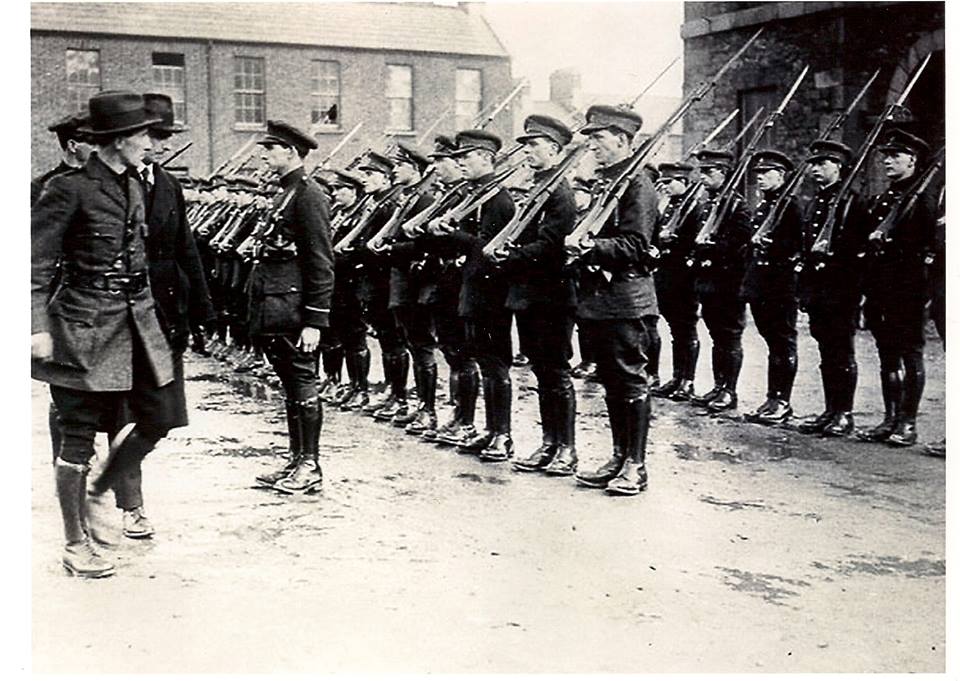National Army/Free State Army
Army Takeover of Beggars-bush Barracks January 1922
The first unit of the regular Free State Army take over Beggars Bush Barracks.
INCLUDED: Capt. Paddy Daly. Lt. Joe Leonard, Lt. Padraig O’Connor, Mick Stevenson, Jim Harpour, Sean O’Connor, James McGuinness, Mick Dunne, W j Phillips, J Robinson, Bill McClean, C Downey, Joe McGuinness, Ned Breslin, John Hanlon, G Gaffney, Daniel Brophy, John Young, John Foy, C Fitzimons, Tom McKenna, P J Dalton, P Rathcliff, J Conroy, Mick Kerrigan, Patrick O’Connor, Bill Walsh, J Sliney, D Golden, J O’Carroll, E Flood, Joe Byrne, John Byrne, Vinny Byrne, J M O’Connor, J Gilhooly, Jack Byrne, Paddy Mullins, Jack Hunter, Dan McCarton, Specky Kelly, Sean Burke, Miner Dowling, Paddy Ivers, Joe Downey, Jack Hanlon, Billy Boyle, Paddy Morrisey, Mick Walker, Paddy Bruton, George White, Eddie Flood and John Muldowney,
Inspected and addressed by General Richard Mulcahy who told them “You are each responsible for the achievement by being the first trenchers in the fight, It is in your own hands to dispel the old spirit on which the stones of this empire fort was built and weighed heavy on the soul of Ireland. I Know you will keep up the spirit of patriotism which was handed to you from the fires of Easter week.”

